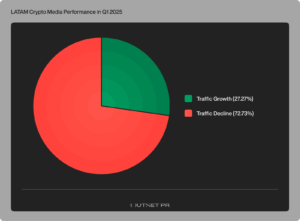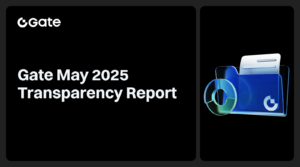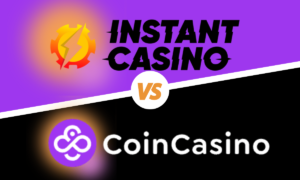
Crypto (or cryptocurrency) is decentralized digital money designed for use on the internet. It is based on blockchain technology, which enables crypto users to securely and anonymously send and receive payments without needing a bank or other financial institutions.
Bitcoin, the first and most well-known cryptocurrency, was created in 2008. Its origin is shrouded in mystery, but it is believed to have been created by an individual or group of individuals known as Satoshi Nakamoto.
Since its inception, crypto has become increasingly popular, with more than 19,000 cryptocurrencies in existence today. Other popular cryptocurrencies include Ethereum, Litecoin, and Bitcoin Cash.
What Is Blockchain Technology?
Blockchain is the underlying technology that powers crypto. It is a distributed database that stores a record of all transactions that have ever taken place on the network.
It’s like a checkbook that is shared among all users on the network. When someone makes a transaction, it is recorded on the blockchain, and everyone can see it. This transparency makes it very difficult for anyone to cheat the system.
Blockchain secures transactions with cryptography, which is why it is often referred to as “crypto.” Transactions are verified by network nodes through a process called consensus.
When a transaction is made, it is broadcast to the network, and all nodes verify it is valid. Once verified, it is added to the blockchain and can never be changed or removed.
Crypto payments are irreversible, which means that once you send a payment, it cannot be reversed. This makes crypto a very secure way to send and receive payments, especially for merchants.
Proof of Stake vs. Proof of Work
Cryptocurrencies have two main consensus mechanisms: proof of stake (PoS) and proof of work (PoW).
Proof of work is the most common consensus mechanism. Bitcoin and most other major cryptocurrencies use it. With proof of work, miners compete to solve complex mathematical problems to add new blocks to the blockchain. The first miner to solve the problem gets to add the block and receives a reward in crypto.
Proof of stake is a newer consensus mechanism some cryptocurrencies use, such as Ethereum and Solana. With proof of stake, miners are chosen based on the amount of crypto they have staked (i.e., their investment in the network). The more crypto they have staked, the greater their chances of being selected to add a new block to the blockchain.
The difference in energy consumption between PoW and PoS is significant. PoW requires a lot of energy to run the miners that power the network. This has led to concerns about the environmental impact of crypto.
PoS transaction speed is much faster than PoW. While Bitcoin takes an average of ten minutes to confirm a transaction, Ethereum can confirm a transaction in seconds. This is because PoS requires far less computing power than PoW.
How to Create a Crypto
There are four main ways to create a cryptocurrency.
Fork an Existing Blockchain
This method is the easiest to create new crypto. It involves taking the code from an existing blockchain and making changes to it to create a new coin. Forks can be hard or soft. A hard fork is a complete change to the code, which makes it incompatible with the original blockchain. A soft fork is a partial change to the code, which remains compatible with the original blockchain.
Create a Token on Top of an Existing Blockchain
This method involves creating a new token on top of an existing blockchain, such as Ethereum or Bitcoin. The advantage of this method is that you don’t have to build your blockchain from scratch. The disadvantage is that you rely on the underlying blockchain’s security.
Build Your Own Blockchain
This method is the most complex and time-consuming option but also gives you the most control over your new cryptocurrency. You must build a blockchain from scratch and create your own consensus mechanism. This option is only recommended for experienced developers.
Use a Service Like EOSIO
EOSIO is a software platform that makes creating and launching your own cryptocurrency easy. It provides all the tools you need to create a token, launch an Initial Coin Offering (ICO), and more.
How Do You Buy Crypto?
The most common way to buy crypto is through a cryptocurrency exchange. These online platforms allow you to buy, sell, or trade cryptocurrencies. Popular exchanges include Coinbase, Binance, and Kraken.
You can also buy crypto from a friend or family member who owns it. This is called peer-to-peer (PTP) trading.
Another option is to use a crypto ATM. These are machines that allow you to buy crypto with cash.
You can also earn crypto by participating in airdrops or bounties. Airdrops are when cryptocurrency companies give away free coins or tokens to promote their project. Bounties are when a company offers crypto rewards for completing certain tasks.
Finally, mainstream services, like PayPal, allow users to buy and sell certain types of crypto.
What Is Crypto Used For?
Cryptocurrencies can be used for a variety of purposes, including:
Payment Processing
Cryptocurrencies serve as payment methods on platforms that allow for peer-to-peer payments, such as LocalBitcoins.
Remittance
Cryptocurrencies are also used to send money overseas. They are much faster and cheaper than traditional methods like bank transfers. Charges for crypto transactions range between 0% to 1.5%.
Crowdfunding
Cryptocurrencies can be used to raise funds for projects or businesses. Crowdfunding is often done through Initial Coin Offerings (ICOs), where companies sell crypto tokens to investors in exchange for funding.
Prediction Markets
Prediction markets allow users to bet on the outcome of events, like elections and sporting events. Augur is a popular prediction market platform that runs on Ethereum.
What Are the Risks of Investing in Crypto?
Investing in cryptocurrency is risky, and there are several potential risks to be aware of:
Price Volatility
The price of cryptocurrencies is highly volatile, and investors can lose a lot of money if they invest at the wrong time. For example, over the past year, there has been a dramatic drop in the price of Bitcoin, from a high of $61,374 in October 2021 to a low of $19,268 in July 2022.
Experts predict it could still drop even further to around 10,000.
Regulatory Risk
Governments do not regulate cryptocurrencies, so investors have little protection if things go wrong. For example, if hackers steal your crypto, there is no guarantee you will get it back.
Security Risk
We store our crypto in digital wallets, which are prone to hacking. In 2019, hackers stole $40 million worth of Bitcoin from the Binance exchange. This example shows how even the most secure exchanges are not immune to attack.
What’s Next for Crypto?
Over the last decade, cryptocurrencies have been on a rollercoaster ride with no end in sight. So, what’s next for the crypto world?
The future of cryptocurrencies is shrouded in uncertainty. While some believe crypto is the way of the future, others think it is nothing more than a fad.
One thing is sure, however, and that is the fact that cryptocurrencies are here to stay. Only time will tell whether they will be used as a store of value, a means of payment, or simply as a speculative investment.
What is Mining City?
Mining City is a platform that provides mining plans, giving users access to hash power and mining rewards. The idea for the platform was conceived in October 2019 by Greg Rogowski, the brand owner of Mining City and the CEO of Prophetek.
Prophetek is the company behind the Mining City platform. It is based in Cyprus, a country with clearer cryptocurrency regulations than many other European countries.
A technological process, combining low electricity costs with storage and miner improvements, known as “Smart Mining,” became an effective way to obtain BTC.
Is Mining City Legit?
Mining City provides real hash power for users. Mining City also leaves banned markets and takes a compliant approach to new laws and regulations, adjusting to global markets.
There have been many widespread scams and attempts to defraud cryptocurrency customers over the past several years, which has prompted increased regulation and efforts by responsible companies to deter fraudulent activities and scams.
The cryptocurrency and crypto mining industries are new and gradually become more and more regulated markets. As new regulations go into effect, reputable market players, like Mining City adjust. This may mean leaving markets where crypto-related activities face new bans. That may also mean having to adjust products or services to stay in line with new laws.
You can follow Mining City’s official social media portals on Facebook, Instagram, Telegram, YouTube and Twitter to observe what Mining City undertakes to adjust to new regulations and requirements and to give Mining City your support in their efforts to become fully compliant.
I specialize in writing about cryptocurrency and have been published in numerous online and offline publications. I have a strong interest in blockchain technology and its implications for the future of finance. In my free time, I enjoy researching new coins to remain updated with industry news.








